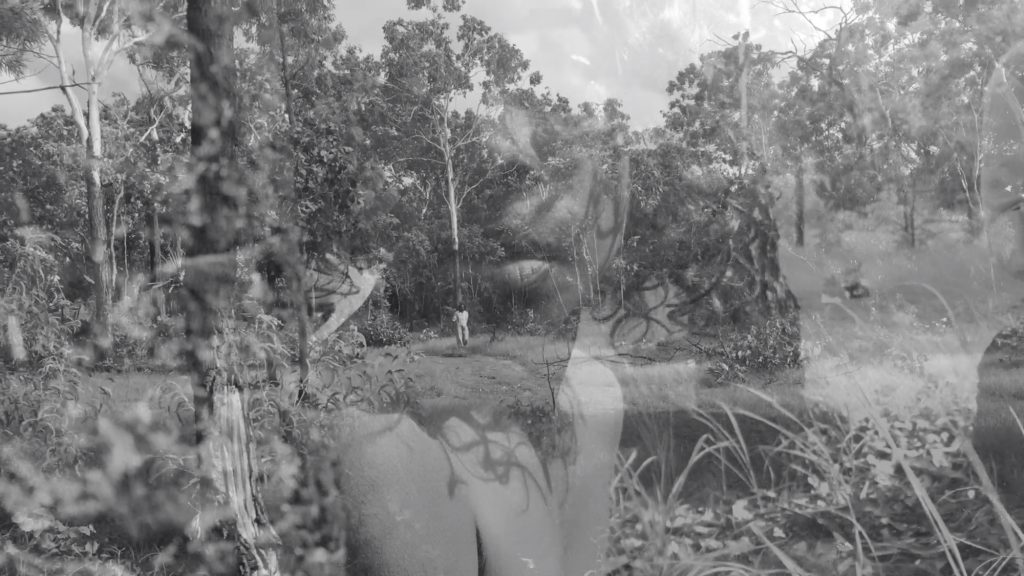
Karrabing Film Collective, Forward with the Ancestors: Day in the Life, 2020, video still
Karrabing Film Collective, Forward with the Ancestors: Day in the Life, 2020, video still

Forward to the bush, but where’s he gonna go?
The crush of lies, leave them behind, leave them behind.
—lyrics from Forward with the Ancestors: Day in the Life
In the indigenous Emiyengal language, the word “karrabing” refers to the lowest point of the tide, the time when the ocean has receded, and an occasion for collective gatherings along the northwestern coastline of Australia, home of the Karrabing Film Collective. Comprising around forty members from different generational and social backgrounds, the collective uses its aesthetic practices as means of self-organization and social analysis through audiovisual experiments with phones or handheld cameras that reveal ancestral and agential narratives of the members’ communities in Beluyen, Northern Territory.
Karrabing Film Collective addresses the harsh realities of settler colonialism, daily police surveillance, resource extraction, religious conversion, indebtedness, and ecologies of “late toxic liberalism,” a term coined by group member and anthropologist Elizabeth A. Povinelli. Referring to their approach as “improvisational realism,” their videos often merge dreamscapes with fiction and archival footage to render family totems and the state of dreaming into forms of surreal role-play and resistance to the trappings of neocolonialism. To escape the constraints of their surroundings, Karrabing reaches into the mangroves, forests, and sacred sites that permit a rekindling of nonlinear time and a reckoning with the collective defiance of the “otherwise.”
The collective’s latest five-channel video installation, Forward with the Ancestors: Day in the Life (2020), follows a typical day in the community’s life in five chapters: “Breakfast,” “Play Time,” “Lunch Run,” “Cocktail Hour,” and “Takeout Dinner.” The accompanying hip-hop tunes provide a sharp satiric layer to the otherwise challenging daily routine in which members of the group are regularly interrupted by external influences. Interspersed with archival radio and television clips, the video also narrates the larger social context of Aboriginals forced into state-sanctioned stereotyping and dependency on government aid. As the Karrabing seek refuge in the circular nature of history and art as a means of survival, the display space beyond the screen—graffitied iron sheets and seating made from used tires—offers a visual synthesis of the group’s subversive humor and communal virtuosity.
Karrabing Film Collective, Forward with the Ancestors: Day in the Life, 2020, video still